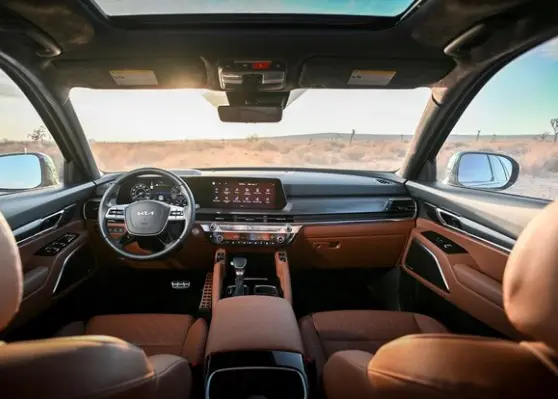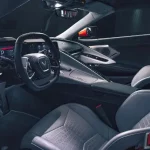The world of automotive design is in a constant state of evolution, and car interiors are no exception. Concept cars and prototypes provide a tantalizing glimpse into the future of automotive interiors, showcasing cutting-edge technology, innovative materials, and groundbreaking designs.
In this article, we’ll take a closer look at these visionary creations and explore the exciting possibilities they hold for the car interiors of tomorrow.
1. **Visionary Materials and Sustainability:**
Concept cars often push the boundaries of materials used in car interiors. Sustainable and eco-friendly materials have taken center stage, with designers exploring options like recycled plastics, reclaimed wood, and organic fabrics. These choices reflect the industry’s growing commitment to environmental responsibility.
2. **Minimalism and Clean Lines:**
Many concept car interiors embrace minimalism and clean lines. Extraneous buttons and switches are replaced with touch-sensitive surfaces and gesture controls, creating a sleek and uncluttered cabin. The emphasis is on creating a tranquil and intuitive driving environment.
3. **Augmented Reality (AR) Displays:**
Augmented reality displays are poised to revolutionize car interiors. Prototypes feature windshields that double as heads-up displays, providing drivers with real-time navigation information, safety alerts, and augmented reality overlays that enhance the driving experience. These AR systems blend the virtual and physical worlds seamlessly.
4. **Adaptive and Personalized Interiors:**
Concept cars of the future will prioritize adaptability and personalization. Smart interiors will recognize individual drivers and passengers, adjusting settings like seat position, climate control, and infotainment preferences automatically. This level of customization ensures a tailored and comfortable ride for everyone.
5. **Holographic Interfaces:**
Holographic interfaces are gaining traction in concept car interiors. These three-dimensional displays float above the dashboard, offering a futuristic way to interact with the vehicle’s systems. Passengers can control various functions using hand gestures or voice commands, creating an immersive and engaging experience.
6. **Biometric Sensors:**
Biometric sensors are making their way into car interiors to enhance safety and well-being. Concept cars may feature sensors that monitor the driver’s vital signs, including heart rate and stress levels. If the system detects signs of drowsiness or distraction, it can alert the driver or initiate safety measures.
7. **Innovative Seating Arrangements:**
The traditional layout of car seats is undergoing a transformation. Some concept cars explore swiveling or rotating seats that allow passengers to face each other, promoting social interaction during the ride. These innovative seating arrangements redefine the concept of in-car connectivity.
8. **Advanced Lighting Systems:**
Lighting plays a crucial role in the car interiors of the future. Ambient lighting that adjusts to the driver’s mood or to external conditions is becoming standard. Concept cars experiment with customizable lighting schemes that create different atmospheres within the cabin, from relaxing to invigorating.
9. **Soundscapes for Well-being:**
The soundscape within future car interiors will focus on enhancing occupants’ well-being. Prototypes incorporate technologies that adapt audio profiles to the driver’s preferences and mood. Additionally, soothing sounds, like nature-inspired compositions, can be played to reduce stress and promote relaxation.
10. **A Focus on Autonomous Features:**
As autonomous driving technology continues to advance, car interiors are being reimagined to accommodate a more relaxed and interactive driving experience. Concept cars often feature swiveling seats, retractable steering wheels, and retractable screens that transform the interior into a lounge-like space during autonomous driving.
Conclusion:
Concept cars and prototypes offer a tantalizing peek into the future of car interiors, where sustainability, technology, and innovative design converge to create extraordinary driving experiences. As automotive manufacturers continue to push the boundaries of what’s possible, we can expect car interiors that are not only functional but also personalized, connected, and environmentally responsible. The car interiors of the future promise to be an exciting blend of cutting-edge technology and visionary design, enhancing both the driving experience and the well-being of passengers.


